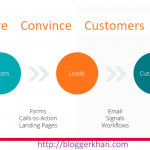By BloggerKhan
Posted in General Business & Technology | Tags : Dan Ariely, discount / saving relative to the absolute dollar amount, marketing decoy, Predictably Irrational, price relative to itself, Relativity of Price
I thoroughly enjoyed Dan Ariely’s behavioral economics book ‘Predictably Irrational‘ and would like to share some points with you. What I liked was the experiments he conducted in collaboration with other researchers to arrive at empirical results, rather than just hunch and intuition. At times, all an experiment proves is what you already know but now you have scientific evidence to back you up instead of just relying on your gut or experience. As this is a marketing oriented blog, my take on it is from a marketers point of view.
Relativity of Price:
Price in isolation does not mean much unless you have something to compare it with.
Let’s say you are selling golf drivers and have several models, Driver 1, Driver 2 and Driver # 3. You really want to push sales of Driver # 2. If you place it in between a lesser priced slightly inferior but similar driver and a much more premium model, sales of Driver 2 will tend to do really well versus being displayed just on it’s own. Driver 1 and 3 will not sell as well.
| Driver # 1 | Driver # 2 | Driver # 3 |
| $ | $$ | $$$$ |
In an experiment involving subscriptions, respondents had three options, S1 at a certain price, S2 at a higher, S3 at the same price as S2 and included the contents of both S1 and S2. Basically, S3 is priced the same as S2 but offers more.
| S1
Internet Only |
S2
Print only |
S3
Internet + Print |
| $59 | $125 | $125 |
What did the respondents pick?
- 16 respondents chose S1
- Zero respondents chose S2
- 84 respondents chose S3
For the next group of respondents, the second option S2 was removed. The selection should still be the same, shouldn’t it? After all, nobody chose S2. The results were very different though:
- 68 chose S1
- 32 chose S3
S2 was a marketing decoy. In the absence of the decoy, more people chose S1. If you want more people to pick S3, introduce a decoy S2 that is close to S3 in price or has the same price but offers less. You start comparing S2 and S3 and forget S1. Irrational? Yes but that’s how the human mind makes decisions. Mr. Ariely has several such examples in his book to further prove his point. In his words, “Relativity is easy to understand but there is one aspect of relativity that consistently trips us up. It’s this; we not only tend to compare things with one another but also tend to focus on comparing things that are easily comparable – and avoid comparing things that cannot be compared easily.”
In another example, he talks about house hunting. A realtor shows you three houses, one is a contemporary design house and the other two are colonial. One of the colonials has some roof work to be done and the owner has knocked off a few thousands from the price. Now you have no other contemporary house to compare the first house with so that falls off your decision making process. You end up comparing the two colonials and end up buying the better quality colonial.
This is important: the decoy must be similar to your preferred item.
If you want to be looked at as handsome, walk around with someone who is similar but less attractive than you. Watch out if someone handsome wants you to tag along 🙂
Price relative to itself:
If an item was selling at $500 and you offer a 20% discount, that is a $100 saving. Advertize the price as $500 – $100 discount =$ 400. That will result in better sales than just changing the price to $400. People like to think they got a good deal and if you don’t show the discount, they have nothing to reference it with.
The discount / saving as relative to the absolute dollar amount. This is from our own experience at our computer unit.
When laptops were expensive, we used to sell ~ 150 laptops a month. Why? New laptops would cost $2500 to $3000. A refurbished laptop at roughly $500 was a tremendous saving. We would make sure that we mention the original price, e.g., IBM ThinkPad 770X $500, (original Retail Price $2500). Customers loved the fact that they were saving $2,000. Prices have tumbled and today new laptops cost around $500. A refurbished laptop for $300 would still be a 40% saving but it does not have the bang of the $2,000 saving. Consequently we got out of the refurbished laptop business.
Feel free to add your thoughts / experiences in the comments below.









No comments yet.